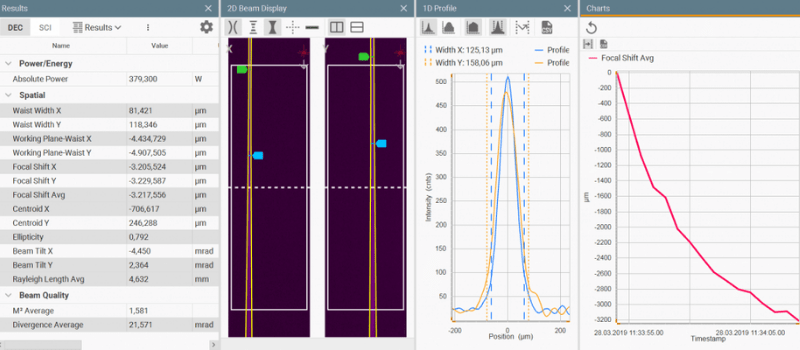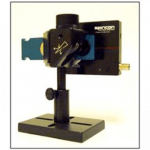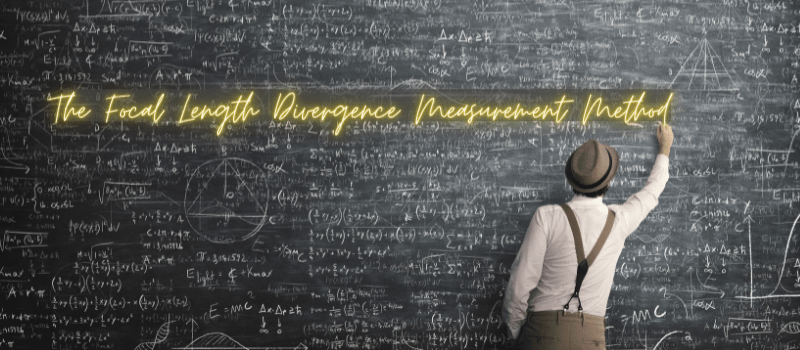Ultraviolet excimer lasers are important for many applications: primarily medical and photolithography, but not exclusively. Measuring them, however, is not always so simple.
We recently encountered a company that needed to know how evenly their excimer laser beam was distributed in space. They tried imaging their beam with specialized ultraviolet cameras, but all they got was a grey-scale image:
This could perhaps be sufficient to produce an estimated beam width, but certainly does not show the distribution very clearly.
They decided then to turn to Ophir-Spiricon and use a camera beam profiler fitted with a UV fluorescence target (which converts the UV light to visible light) and imaging lens. They knew how accurate BeamGage is, and that it’s the only laser profiling system with algorithms that meet ISO standards.
So, they had some pretty high hopes.
However, the power was too low (~μWs) to cause the UV target to fluoresce, and after several failed attempts, they decided to remove the target.
It should be noted that although these CCD cameras respond down to 190 nm, we generally recommend using a UV image converter (the target and lens) to avoid damage to the camera. However, since that wasn’t an option in this case and the very low power lessened the odds of damage, we decided to make an exception to our rule and profile the beam directly.
So now we’ve got all the benefits of BeamGage profiling software, and we’re operating directly on the camera itself, so we should expect some improvements, right?
Excellent – it’s no longer gray-scale!
… Now it’s purple-scale.
Although this doesn’t seem like much of an improvement, all the necessary changes have been made. We’re now using state-of-the-art beam profiling equipment. Since the UV converter has been removed, we’re also measuring the laser beam directly. The only thing holding us up here is that the power is so low the beam is hardly distinguishable from the noise.
However, that means that we’ve left the world of precise beam profiling and entered the challenges of signal processing. And in this case, it’s not such a big deal.
BeamGage has a summing feature which simply sums multiple frames together. This is an excellent solution for a low-power beam like our case here. Since the noise is random while the signal remains consistent, adding frames together has a similar effect to raising the power of the laser beam while keeping the noise pretty much as it is.
Here’s the results of 200 frames:
At last! Color!
Now we can calculate how uniform the laser beam is. In this particular case, the company found a 48% difference in power density across their laser – which was unacceptable, as far as they were concerned.
As the common saying goes, “A problem well-stated is already half-solved.” Now that the laser’s irregularities can be quantified, the laser and optical parameters can be tweaked, while monitoring the progress in BeamGage to ensure optimal uniformity.
What challenges have you come across while profiling your laser beam? Let us know in the comments.
You might also like to read:















Leave a Reply
Your email address will not be published. Required fields are marked *